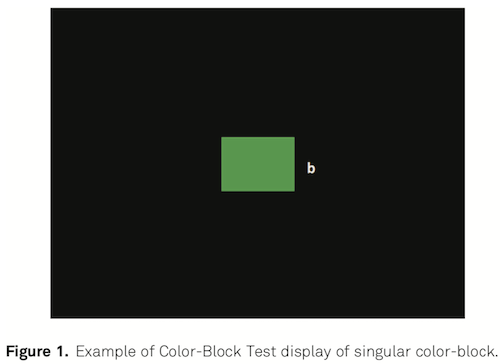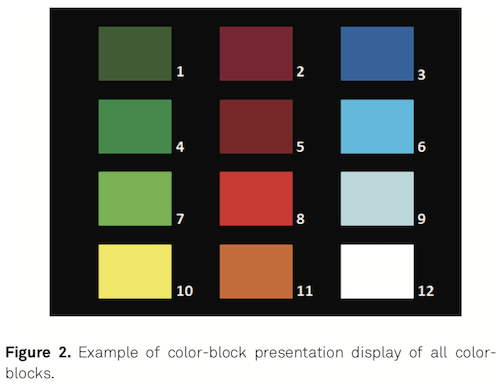Home
A comprehensive resource for safe and responsible laser use

2019 study: "Laser Eye Protection and Color Recognition and Discrimination in Aviation"
Laser eye protection (LEP) did not have a significant effect on recognizing different colors (e.g., red vs. green vs. blue vs. amber), according to a paper published in 2019, in the journal Aviation Psychology and Applied Human Factors.
The study did find "marginal" differences in discriminating between different shades of a color. Amber was "the most difficult color to identify/discriminate when using the LEP." It was sometimes seen as red, and sometimes red was sometimes seen as amber. This may be because the eyewear tested blocked certain red wavelengths, and amber is a mixture of red plus orange/yellow.
Testing procedure
90 subjects were tested; they were students, faculty and staff at Florida Institute of Technology. The subjects were tested using a 10-plate Ishihara test to ensure that all had normal color vision.
The color recognition and discrimination test was done by showing a color block on a computer screen for 20 seconds…

… then giving the test subject 30 seconds to identify that block on a subsequent screen:

A conclusion of the study was that "the use of LEP may allow pilots to retain sufficient color recognition abilities. This suggests that LEP may be an effective and feasible laser strike mitigation method."
The study noted the limitation that only two LEP glasses were tested, one blocking certain red and green wavelengths, and the other blocking red, green and blue. It was not clear from the study if the eyewear had been designed specifically for the aviation environment — with emphasis on high light transmittance and good color rendition — or if these were for general purpose laser eye protection. The study also did not state the type of LEP: dye, thin-film or holographic.
Abstract
"The number of reported laser strikes on aircraft has increased over the years. Laser strikes pose a threat to safety and pilot health. Laser eye protection (LEP) is one mitigation method available to pilots; however, LEP can affect a person’s color vision. This exploratory study investigated the effect of LEP on color recognition and discrimination of four colors – red, blue, green, and amber – using a sample of 90 participants. When using the LEP, most participants were still able to identify the correct color, but color discrimination between different shades of the same color proved to be less accurate. Of the investigated colors, results suggested that color recognition of amber was the most affected by LEP."
References
Sherisse Pierre, Deborah Carstens and John Deaton, "Laser Eye Protection and Color Recognition and Discrimination in Aviation," Aviation Psychology and Applied Human Factors (2019), 9, pp. 86-94, Hogrefe Publishing. https://doi.org/10.1027/2192-0923/a000165 Published online October 15 2019. The article is behind a paywall; the price is $28.
The paper is derived from a Master's thesis by Sherisse Pierre, dated May 2017. A PDF is online here. There may be differences between the 2017 thesis and the 2019 paper, which was received by the journal in May 2018 and a revision was submitted January 2019.